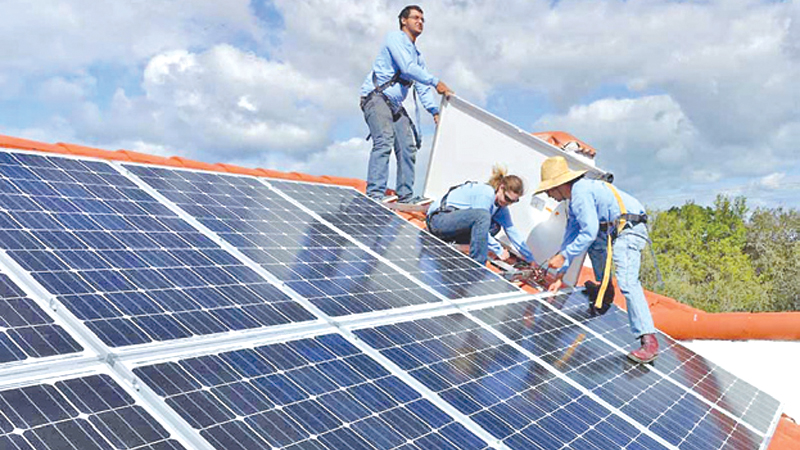The new consumer “Electric Shock” tariff announced by PUCSL, which increased consumer tariffs by up to 75% is a result of not giving priority and helping to implement Renewable Energy (RE) projects and also losses of the Ceylon Electricity board. (CEB).
Even with this tariff revision CEB losses will continue with the rupee depreciation and world fossil fuel prices increasing. When Sri Lanka commissioned the Lakvijaya Norochcholai Coal plant, the exchange rate was Rs 113 to the US $ and the coal cost per MT was under US$ 80.
“Today, the exchange rate is Rs 370 to the US$ and coal cost per MT is over US$407/MT at the source. As a result, the cost of energy produced by coal is as high as Rs 75 per kW,” the Renewable Energy generating Association members said at a press conference last week. The CEB has been spending around Rs 20 bn per month for electricity generation from Diesel and furnace oil from April-July 2022. “Sri Lanka most definitely cannot afford to bear such excessive costs for coal & diesel continuously.”
From a 100% renewable energy-dependent country, running almost entirely on hydroelectricity, Sri Lanka’s generation mix had deteriorated to 35% Renewable Energy (RE) – 65% fossil fuel by 2022.
Having foreseen this eventuality, there has been a concerted effort to fast-track the development of the ready alternative of rooftop solar power by upgrading the Surya Bala Sangramaya.
“If this initiative receives due recognition and support, the need for increased power cuts could be limited. Addition of rooftop solar systems is the most feasible method of adding renewable energy to the national grid in the short term as the system can be added in 1 day to 4 months.
The CEB did not make reasonable efforts to absorb sufficient amounts of RE to the national grid, in spite of clear directives from industry regulators over the past decade, particularly since 2016.”
Sri Lanka has over 6.5 million electricity customers and only 40,000 of them have so far installed Rooftop Solar systems. If Sri Lanka can convert around 20% of these 6.5 mn customers, that is a million customers, into Prosumers with Rooftop Solar systems, installing a 3kW system per location, 3000MW (3GW) of energy can be added to the national grid.
“If fossil fuel prices remain at the current level and annual rupee depreciation is limited to 10%, adding 3GW of Rooftop Solar systems can save the country up to Rs. 3 billion dollars over the next three years by lower fossil fuel purchases.
A large number of entrepreneurs and jobs created by the RE industry can provide a boost to the economy and also benefit the Environment with reduced carbon emissions.”



Add new comment